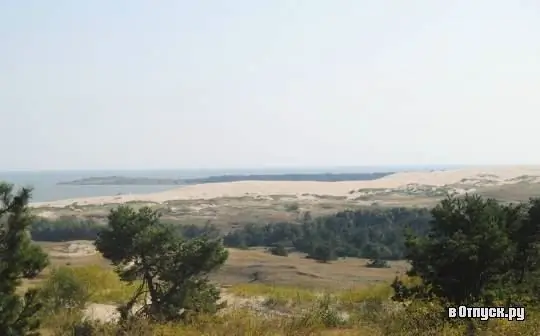
Description of the attraction
The Curonian Spit is a paradise for birds and bird watchers. It has been known for centuries that a popular bird route from northern Europe to southern Europe (and vice versa) runs over the Curonian Spit, called the “migration road of the White-Baltic Seas”.
At the beginning of the twentieth century (1901), in one of the few villages on the Rasite Spit (now the Rybachy village), a special station was created to collect information on the migratory flow of birds. The main activity of the station, which is still operating today, is the collection of biometric material and the ringing of birds. This station has the tallest traps in the world, which are huge funnels 15:30:70 m, at the end of which there are small cages. During migration, about a million birds fly through the spit a day, more than one hundred of them fall into traps. In total, about 300 species of birds migrate along this route, more than 200 build nests on the Curonian Spit.
It is worth noting that the study of bird life is one of the common hobbies around the world among those who like to observe nature in its various manifestations. And one of the main tasks in this matter is the identification of migratory birds and the identification of their total number. To do this, you need to be very familiar with the appearance of the birds and the sounds they make. Because a flying bird can only be recognized by its voice. You will also need special devices (binoculars, telescopes or digital photos, video equipment) and a specialized guide about birds.
You can watch feathered friends from any heights (from hills and dunes, from special towers) or in an open wide area, for example, in the fields. But no matter where you contemplate the flight of birds, complete silence and the absence of others, any interference, and most importantly, the place you have chosen for observation should be on the path of their migration, is necessary. The combination of all the requirements makes the Curonian Spit a favorable place for comfortable bird watching.
Parnigio is one of the highest and most popular among fans of feathered dunes, located not so far from the village of Nida, known among foreign bird watchers as the Hourglass Dune. From March to May, birds fly to Lithuania from wintering grounds to incubate new offspring. An even greater flow of migrants to the south can be observed in the autumn period (August - November), since chicks hatched over the summer are added to the main composition.
First, the birds fly away, which have a long journey to the south. The very first of them fly mainly at night, overcoming great distances, to Africa and India. These are orioles, cuckoos, lentils, small flycatchers. Then the migration of birds wintering in Europe begins. These are blackbirds, finches, tits. The birds are very active on sunny days.
In Europe, there are not many places where you can observe so many migratory birds, unlike the Curonian Spit. Successful geographic data direct birds to fly over a narrow streamer, allowing observers to view a wide variety of birds. Various species of birds were seen on the spit, many of which flew to winter on the African continent and those who strove north to incubate their offspring.
An important advantage for bird watching in the vicinity of Nida is that there is a well-developed tourist infrastructure in the village. Regardless of the season, you can find good accommodation and food at reasonable prices. Likewise, the Parnigio dune is well prepared for a visit. It can be reached by car so as not to carry sensitive and sometimes very heavy equipment, which is necessary for observation. Even if the bad weather suddenly catches you by surprise, you can easily find refuge here.
Starting in August, during the autumn migration period, up to half a million birds can be observed per day, flying south. And among them are flocks of starlings, siskins, blackbirds, swallows, finches, larks, ducks and swans. The number of birds of prey is also great. In the spring period, frequent guests on the spit are skiffs, pigalits, herons and curlews. What is important here you can see rare species of birds such as pink starling, falcon, peregrine falcon and red kite.






